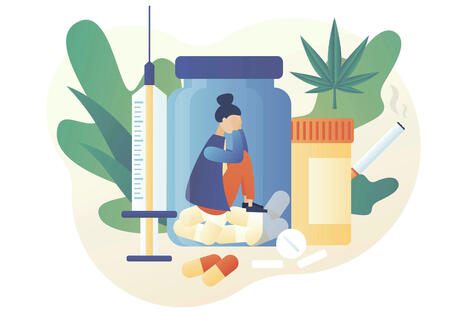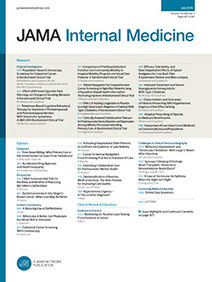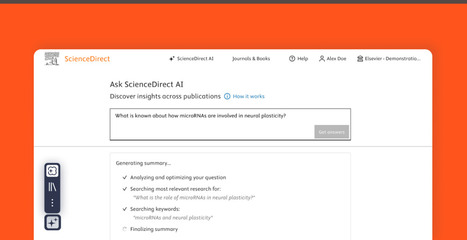 Your new post is loading...
 Your new post is loading...
Over the past decade, extraordinary efforts have focused on addressing the US opioid epidemic, which was fueled initially by prescription drugs and now by high-potency synthetic opioids, such as fentanyl. Treatment of opioid use disorder (OUD) with medications—buprenorphine, methadone
Chronic pain is a significant global health problem that affects millions of people globally and in the US which can sometimes lead to unhealthy coping mechanisms such as substance use. This case–control study aimed to examine the relationship between chronic pain and substance use using data from the National Health and Nutrition Examination Study (NHANES). Descriptive analysis and logistic regression models were used to compare the odds of substance use in individuals according to a history of ongoing (≥ 6 weeks) or chronic pain (≥ 3 months). A total of 980 individuals were included in the analysis. Among them, 87.4% reported no substance use, 10.2% single substance use, and 2.3% polysubstance use. Compared with 19.33% of non-substance users, 23.36% of single substance users and 39.21% of polysubstance users reported current ongoing pain (p-value: 0.04). Examining the association between substance use and chronic pain revealed that polysubstance users had a significantly higher risk of having current or a history of ongoing pain or a history of chronic pain compared to non-users, with adjusted odds ratios (aORs) ranging from 2.28 (95% CI 2.27–2.29) to 6.30 (95% CI 6.28–6.32). Single substance users also faced increased risk, with aORs from 1.19 (95% CI 1.18–1.20) to 2.14 (95% CI 2.13–2.15). These results highlight the elevated risk of substance use associated with chronic pain, particularly elevated risk of polysubstance use, after adjustments for demographic, socioeconomic, and mental health factors. These findings emphasize the need for targeted interventions addressing chronic pain to potentially mitigate substance use risks.
PsychiatryOnline.org is the platform for all American Psychiatric Association Publishing journals, DSM, and bestselling textbooks, as well as APA Practice Guidelines, and continuing medical education.
By Deiksha Veerapaneni Imagine being able to not feel pain and instead feel intense relief? That would be pretty addicting, right? For many, that feeling sounds like an escape, a break from suffering. But that powerful sense of relief is exactly what makes opioids so dangerously addictive. These drugs don’t just dull pain, they take […]
Leaders of top nursing organizations advise health systems on ways they can improve well-being and boost their chances at hiring and keeping good nurses.
Addiction alters identity. A therapeutic community that addresses identity and relationships can help people reclaim a lost identity or conjure a new one.
Overdose deaths are significantly down, but now cartels are adding new toxic adulterants like lidocaine, medetomidine, and xylazine to fentanyl and fentanyl to cocaine and meth.
The study relied on self-reported data and a cap of three children per household—indicating that the actual number could be higher.
Alcohol was the most commonly abused substance among parents
Addiction isn’t a brain disease – but substance use is rarely a free choice either.
A hospital-based addiction consultation service can improve receipt of evidence-based treatment for people with opioid use disorder (OUD).
Failing to offer this care is a discouraging and dangerous missed opportunity
|
Almost 1 in 10 workers in their 30s uses alcohol, marijuana or hard drugs like cocaine while on the job in the United States, a new study has found.
In this episode, the conversation centers on alcohol and drug addiction. Gain insight into one person's journey to recovery.
Charlie Health reports that alcohol use disorder affects over 29 million Americans, with rising deaths and a significant treatment gap.
If some of what follows isn’t the most pleasant reading you’ll do today, it just may be the most important. If you, a friend or relative are struggling with alcohol or drug abuse, problem gambling, homelessness, depression, anxiety or unemployment, there is help for you today at Community & Family Resources, 500 Fair Meadow Drive, […]
Stay ahead of the curve with this guide to the top 7 teen substance use trends for 2025, from vaping devices to social-media challenges.
Substance abuse has become a serious public health problem worldwide, and finding effective prevention and treatment strategies is undoubtedly an urge…
About The Study: In this national survey of 1,515 adults conducted in June 2024, 166 respondents (11.0%) reported illicit opioid use and 114 (7.5%) reported illicitly manufactured fentanyl use within the past 12 months. These rates are much higher than previously reported estimates. The findings highlight the need for more timely and accurate data to inform policy and intervention strategies. Enhanced data collection efforts are essential for understanding and mitigating the opioid crisis.
Can the brain recover from addiction? New research shows that mindfulness can restore the addicted brain's ability to savor natural pleasure.
Substance use disorders can alter a person's whole experience of the world, even after use ends.
Heart disease requires long-term management. Diabetes requires ongoing care. Substance use disorder is a chronic condition, too. Why is it still treated like an acute crisis?
How do you overcome drug or alcohol addiction? Why is addiction recovery support so important? Persistence, self-compassion among keys to recovery
News on substance use, weight loss drugs, maternal & child health and other healt
|






 Your new post is loading...
Your new post is loading...






















Addressing Addiction
The problem of addiction
Please also review AIHCP's Substance Abuse Specialist Program